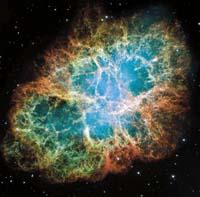Supernovae discovered in Antarctic ice
2009/05/01 Elhuyar Zientzia Iturria: Elhuyar aldizkaria

Arab and Chinese astronomers left historical documents on the brightest supernovae in the years 1006 and 1054. Now, researchers from the Japanese center Riken Nishina have discovered the remains of these supernovae in a sample of the ice cores of Antarctica.
Ice samples store information about atmospheric components. Thanks to this, they often provide adequate information on the climate of yesteryear. So far the issue has been discussed only at the academic level, and scientists believe that ice samples also store information on supernovae. In fact, gamma rays derived from the nearby supernovae of our galaxy generate a significant impact on the atmosphere, which increases the production of nitrate ions.
The team of Japanese researchers analyzed in 2001 a sample of ice collected in the Antarctic station of Dome Fuji, finding maximum concentrations of nitrate ions (NO3-), corresponding to supernovae of the years 1006 and 1054.
In addition, the team of researchers observed cycles of variation in the level of nitrogen oxide of 10 years, due to cycles of solar activity of 11 years.

Gai honi buruzko eduki gehiago
Elhuyarrek garatutako teknologia



